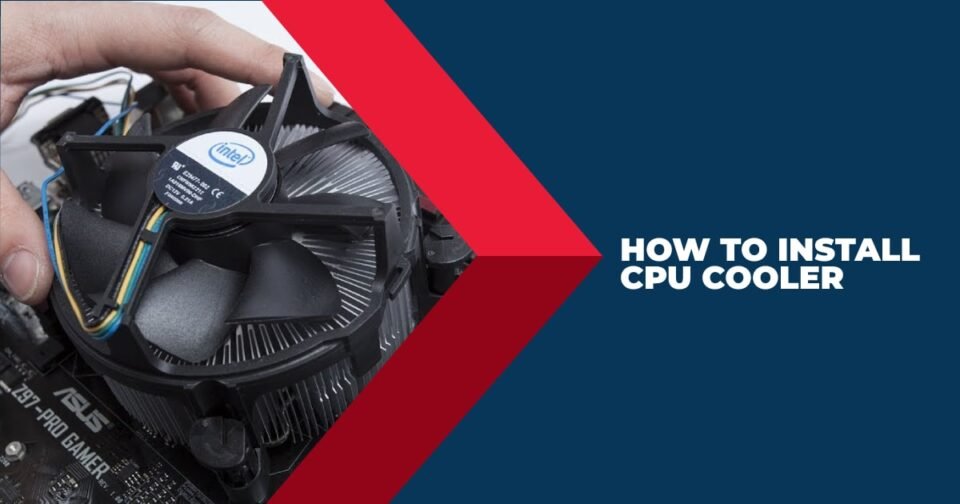So, you’ve installed your processor. It’s time for the more difficult part. This article will tell you How To Install Cpu Cooler. When you’ve got your computer in, you need to make sure it stays cool with one of the best CPU coolers.
If you don’t install your cooler correctly, your processor will heat faster and hotter than it should, and it may eventually shut down your computer to protect itself. We will walk you through the process of installing a CPU cooler, and we’ll do it step-by-step so you don’t accidentally get anything wrong.
Assuming that you’ve installed your processor in the motherboard socket, the next step is to install your CPU cooler. Whether you’re replacing your stock cooler with an aftermarket one or installing a stock cooler for the first time, it’s quite easy to get confused. Not installing your CPU cooler right may cause it to overheat and even damage your PC.
Thermal paste should be applied or checked
Your CPU cooler does not simply go onto your CPU. There should be a thin layer of a thermal compound that eliminates any gaps between the lid of your CPU cooler and the base of your CPU. Thermal paste can be applied before installation, however.
If your cooler has pre-applied thermal paste, you’re ready to go! Avoid applying the second layer of thermal paste. If your cooler doesn’t already have thermal paste on it, apply it to the top of your CPU lid.
There are many schools of thought on how you should apply the oil. Some people think you should apply a large amount and spread it out evenly across the top. Others prefer to keep it a little closer to the center and apply a little more.
There are other approaches to thermal paste application that include spreading a line across the CPU lid or applying a bit of paste directly to the CPU and then spreading it evenly with a credit card. If your processor has leftover thermal paste on it from a previous cooler, do not rely on that.
A thermal paste is used to help cool electronic components. It is often applied by removing the thermal compound from the heatsink and then applying a fresh layer of it over the new surface.
Set up any standoffs and/or install the bracket behind the motherboard (optional)
Depending on the size of your motherboard and cooler, you may need to add a few extra bits of hardware to your setup. Standoffs are used to hold your motherboard out of the way of your power supply or other components. Brackets are used to secure your cooler to your motherboard.
If your cooler is missing these components, check which components are appropriate for your motherboard and CPU, and install them now. If you’re installing a water cooler, the time has come for you to also attach the radiator to your case.
Line up your CPU cooler
Take your cooler, carefully line up the screws (or whatever type of connector it uses) with the holes in your motherboard or the standoffs you installed earlier. Lower the cooler onto the CPU.
Attach the CPU cooler
The CPU cooler should be installed first before the power supply is plugged in. Loosely screw in the connectors until it clicks into place. Tighten the screws with increasing pressure to prevent the motherboard from vibrating too much. If the motherboard is still vibrating, stop tightening and remove the connector until it is no longer vibrating.
Attach any fans
If you’ve removed any fans from your refrigerator earlier or still have some to install, you can attach them to your refrigerator now. How they connect will depend on the fans and your refrigerator, so consult your manual. To use a water cooler, you will have to connect its radiator, coolant reservoirs, and water pump to one another.
Plug everything in
To complete a circuit, it is often necessary to have a path of electrical current flow through two or more conductors. In the case of a computer system, we need to know if there is a path of electricity flowing from one conductor to another.
In most cases, a simple air cooler fan will have a specific connector on the motherboard (It may look like this: “CPU_FAN”). Make sure you connect everything to the right power source and check for any warnings or messages.
Push the Pins In
Double-check to make sure you have all your push pins in place and then take a moment to get comfortable holding the cooler and doing one corner at a time.
Always start a corner by pulling the edge tight so the board will seat correctly on a flat surface. Then, move to the opposite side and push down on the board to install it. Once you have pushed in all four pins, try gently wiggling the cooler to see if you have mounted it correctly.
Conclusion:
Installing a CPU cooler is simple. Most people can do it themselves, but there is no shame in having someone help you, especially if there is a backplate. The easiest way to install coolers is using high-quality thermal paste, and it will also help reduce the risk of premature failure. It’s a good idea to re-apply the paste before installing your cooler.
You can also visit cranberry.fm to know all about CPU Coolers and related stuff.
So, these were some tips for installing a CPU cooler. We hope that this article helped you gain all the information you needed to know for How To Install Cpu Cooler. If you have any queries regarding this then feel free to comment below and we will try to help you.

